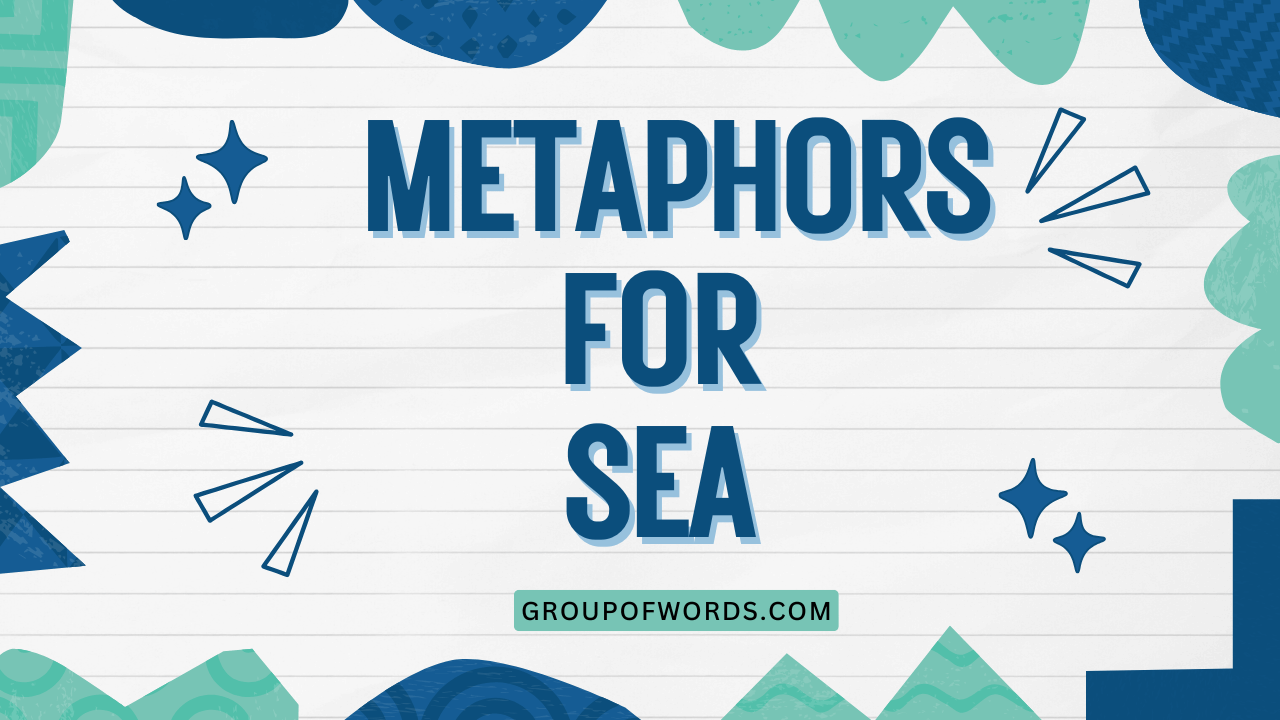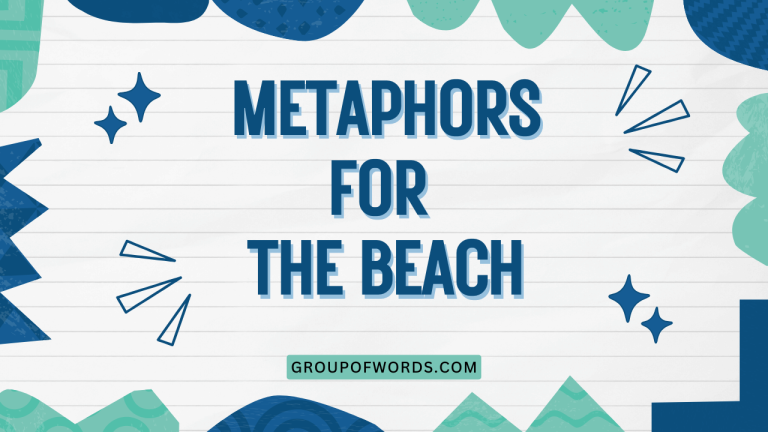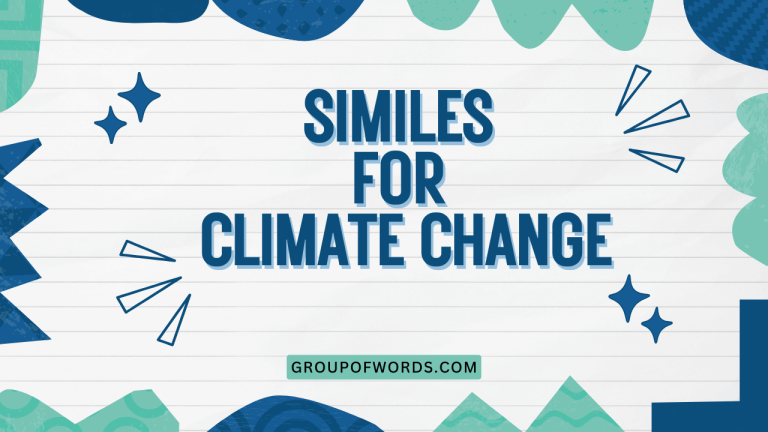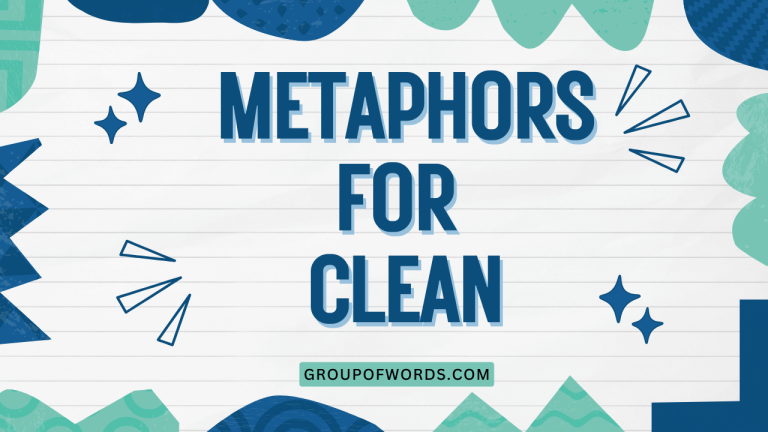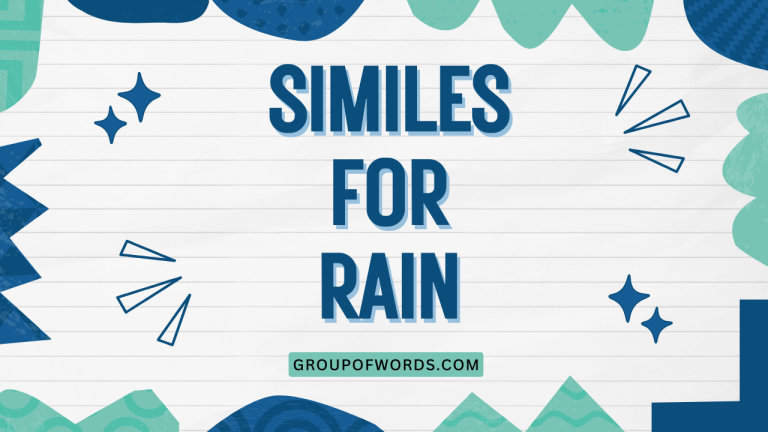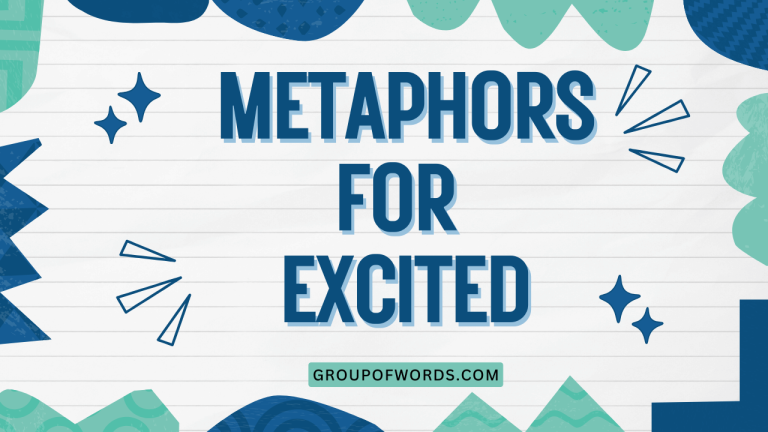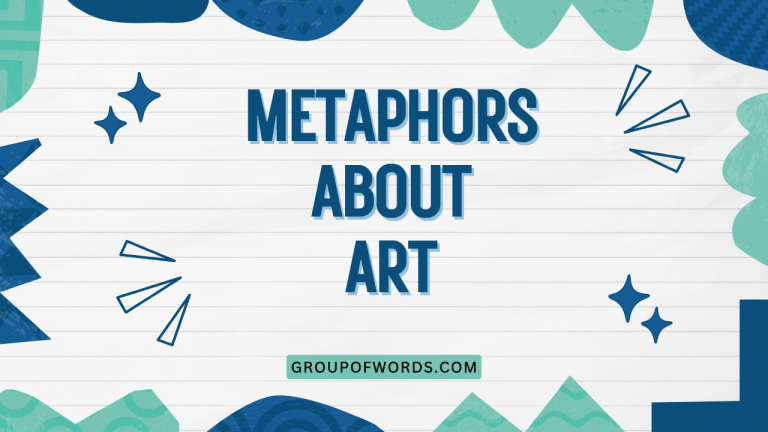Sea as Metaphor: Exploring Figurative Language and Meaning
Understanding metaphors is crucial for mastering English, especially when analyzing literature, poetry, and even everyday conversations. The sea, with its vastness, mystery, and power, is a particularly rich source of metaphorical language.
This article delves into the various ways the sea is used metaphorically, providing a comprehensive guide to its meaning, structure, and usage. Whether you’re an English language learner, a student of literature, or simply someone interested in the nuances of language, this guide will enhance your understanding and appreciation of the sea as a powerful metaphorical tool.
This article will benefit students learning English as a second language, those preparing for English proficiency exams, and anyone interested in improving their comprehension of figurative language in literature and everyday communication.
Table of Contents
- Introduction
- Definition of Sea Metaphors
- Structural Breakdown of Sea Metaphors
- Types of Sea Metaphors
- Examples of Sea Metaphors
- Usage Rules for Sea Metaphors
- Common Mistakes with Sea Metaphors
- Practice Exercises
- Advanced Topics in Sea Metaphors
- Frequently Asked Questions (FAQ)
- Conclusion
Definition of Sea Metaphors
A metaphor is a figure of speech that directly compares two unlike things without using “like” or “as.” When the sea is used metaphorically, it represents something else, often an abstract concept or experience. The sea’s vastness, depth, and variability make it a powerful and versatile metaphorical tool.
It can symbolize life, emotions, challenges, journeys, chaos, or tranquility, depending on the context.
In essence, a sea metaphor leverages our understanding of the physical sea to illuminate something intangible. For example, saying someone is “drowning in sorrow” uses the image of drowning in the sea to convey the overwhelming nature of their sadness.
The metaphor doesn’t literally mean the person is underwater; it means they are overwhelmed and struggling to cope.
Structural Breakdown of Sea Metaphors
Sea metaphors typically consist of two main elements: the **sea** (the literal subject) and the **concept** it represents (the metaphorical subject). The connection between these two elements is the **shared characteristic** that justifies the comparison.
This shared characteristic is often related to the sea’s physical attributes (e.g., vastness, depth, turbulence) or its common associations (e.g., exploration, danger, freedom).
Consider the metaphor “life is a sea.” Here, the sea is the literal subject, and life is the metaphorical subject. The shared characteristic might be the unpredictable nature of both, with both containing calm and stormy periods.
The structure can be further broken down as follows:
- Literal Subject: The sea
- Metaphorical Subject: Life
- Shared Characteristic: Unpredictability, vastness, potential for both calm and storms
Understanding this structural breakdown helps in analyzing and interpreting sea metaphors effectively. It allows us to identify the core meaning and appreciate the nuanced connections between the sea and the concept it represents.
Types of Sea Metaphors
Sea metaphors are incredibly diverse, reflecting the many facets of the sea itself. Here are some common types of sea metaphors and their meanings:
Sea as Life
The sea is often used to represent life, emphasizing its vastness, complexity, and unpredictable nature. This metaphor can highlight the opportunities and challenges that life presents.
Sea as Emotion
Emotions, like the sea, can be deep, turbulent, and unpredictable. Sea metaphors are frequently used to describe intense feelings, such as sorrow, joy, anger, and love.
The sea’s changing moods mirror the fluctuations of human emotions.
Sea as Challenge
The sea’s inherent dangers and difficulties make it a fitting metaphor for challenges and obstacles. Navigating the sea can represent overcoming adversity and achieving goals despite the odds.
Sea as Journey
Journeys, both literal and metaphorical, are often compared to the sea. The sea’s vastness and the act of sailing across it symbolize the passage of time, the search for meaning, and the exploration of the unknown.
Sea as Chaos
In its most turbulent state, the sea represents chaos, disorder, and destruction. This metaphor is used to describe situations that are out of control and overwhelming.
Sea as Tranquility
Conversely, a calm sea can symbolize peace, serenity, and tranquility. This metaphor emphasizes the soothing and restorative power of nature and the possibility of finding inner peace amidst life’s storms.
Examples of Sea Metaphors
The following tables provide examples of sea metaphors categorized by the concept they represent. Each example is accompanied by an explanation of its meaning.
Sea as Life Examples
This table illustrates how the sea is used to symbolize various aspects of life, emphasizing its vastness, unpredictability, and the constant flow of experiences.
| Metaphor | Explanation |
|---|---|
| Life is a vast sea, full of uncharted waters. | Life is extensive and largely unknown, with many unexplored possibilities. |
| We are all sailors on the sea of life. | We are all navigating our own paths through life, facing its challenges and uncertainties. |
| The sea of life can be both calm and turbulent. | Life has periods of peace and periods of difficulty. |
| He was lost at sea, searching for his purpose. | He was feeling aimless and uncertain about his direction in life. |
| She navigated the sea of life with grace and determination. | She faced life’s challenges with composure and resolve. |
| The sea of opportunity stretched before them. | There were many possibilities and chances available to them. |
| His life was a deep sea, full of hidden treasures. | His life was rich and fulfilling, with many undiscovered joys and experiences. |
| She embarked on a journey across the sea of life. | She started a new phase in her life, venturing into the unknown. |
| The sea of time flowed endlessly. | Time continued without ceasing, like a vast and unending ocean. |
| He was adrift in the sea of existence. | He felt lost and without purpose in the world. |
| The currents of life carried her forward. | External forces and circumstances influenced her path through life. |
| She found solace in the sea of life’s experiences. | She found comfort and understanding through her life’s journey. |
| The sea of possibilities lay before him. | He had numerous opportunities and choices available to him. |
| He sailed through the sea of adversity. | He faced and overcame many challenges in his life. |
| The sea of knowledge is vast and deep. | There is an immense amount to learn and discover in the world. |
| She explored the sea of her own potential. | She discovered and developed her hidden talents and abilities. |
| He dove into the sea of new experiences. | He eagerly embraced new adventures and opportunities. |
| The sea of memories washed over him. | He was flooded with recollections of past events and experiences. |
| She navigated the treacherous sea of politics. | She skillfully maneuvered through the complex and often difficult world of politics. |
| The sea of emotions overwhelmed him. | He was overcome by intense feelings and sentiments. |
| Life’s sea is full of unexpected storms. | Life has many unpredictable and difficult challenges. |
| He found peace in the calm sea of retirement. | He enjoyed the tranquility and relaxation of his post-career life. |
| The sea of love surrounded them. | They were enveloped in deep affection and care. |
| She charted her course through the sea of uncertainty. | She planned her path despite the unknown challenges ahead. |
Sea as Emotion Examples
This table presents examples of how the sea is used to describe various emotions, highlighting the intensity and fluctuating nature of human feelings.
| Metaphor | Explanation |
|---|---|
| He was drowning in a sea of sorrow. | He was overwhelmed by deep sadness and grief. |
| Her anger was a stormy sea, raging and uncontrollable. | She was experiencing intense and uncontrolled anger. |
| Love is a calm sea, peaceful and serene. | Love is a source of peace and tranquility. |
| Fear washed over him like a tidal wave. | He was suddenly overcome by intense fear. |
| She was lost in a sea of despair. | She felt hopeless and without direction. |
| His joy was a boundless sea, full of laughter and happiness. | He was experiencing immense joy and happiness. |
| The sea of jealousy consumed her. | She was intensely envious and resentful. |
| He was tossed about on the waves of anxiety. | He was experiencing constant worry and unease. |
| Her heart was a deep sea of emotions. | She had a complex and profound emotional life. |
| The sea of grief threatened to engulf him. | He was in danger of being overwhelmed by sadness. |
| She navigated the turbulent sea of her emotions. | She managed her strong feelings with difficulty. |
| He found peace in the calm sea of acceptance. | He felt serene after accepting a difficult situation. |
| The sea of regret haunted him. | He was constantly troubled by past mistakes. |
| She was swept away by a sea of admiration. | She was deeply impressed and respectful. |
| He battled the waves of his own self-doubt. | He struggled with a lack of confidence. |
| The sea of nostalgia washed over her. | She felt a sentimental longing for the past. |
| He was adrift in a sea of confusion. | He felt disoriented and uncertain. |
| Her courage was a steady ship on a stormy sea. | She remained brave and resolute despite difficult circumstances. |
| The sea of empathy connected them. | They shared a deep understanding and compassion for each other. |
| He was overwhelmed by a sea of gratitude. | He felt extremely thankful and appreciative. |
| Her sadness was a deep, dark sea. | She felt profoundly unhappy and despondent. |
| He found solace in the calm sea of forgiveness. | He experienced peace after forgiving someone or being forgiven. |
| The sea of hope buoyed her spirits. | She felt optimistic and encouraged despite challenges. |
| He struggled against the tide of despair. | He fought to overcome feelings of hopelessness. |
Sea as Challenge Examples
This table provides examples of how the sea is used to represent challenges and obstacles, highlighting the difficulties and struggles one might face in life.
| Metaphor | Explanation |
|---|---|
| Life’s challenges are like navigating a stormy sea. | Overcoming life’s difficulties requires skill and resilience. |
| He faced a sea of obstacles in his career. | He encountered many difficulties and setbacks in his professional life. |
| The project was like sailing through uncharted waters. | The project involved taking risks and facing unknown challenges. |
| She weathered the storm of adversity with grace. | She faced difficult times with composure and strength. |
| He was shipwrecked by financial difficulties. | He suffered a severe financial setback. |
| They navigated the treacherous currents of the business world. | They skillfully maneuvered through the complex and competitive business environment. |
| He was lost at sea, struggling to find his way back to shore. | He felt overwhelmed and unsure of how to overcome his challenges. |
| She faced a tidal wave of criticism. | She received a large amount of negative feedback. |
| He sailed against the wind of public opinion. | He acted in opposition to popular belief. |
| The sea of bureaucracy threatened to sink the project. | Excessive regulations and paperwork could jeopardize the project’s success. |
| She navigated the rough seas of her illness. | She managed the difficult symptoms and treatments of her illness. |
| He battled the waves of doubt and uncertainty. | He struggled with feelings of insecurity and lack of confidence. |
| The sea of competition was fierce. | The level of competition was intense and challenging. |
| She weathered the storm of the scandal. | She survived the negative publicity and consequences of the scandal. |
| He swam against the tide of poverty. | He worked hard to overcome the disadvantages of being poor. |
| The sea of legal challenges seemed endless. | The legal difficulties appeared insurmountable. |
| She navigated the choppy waters of the negotiation. | She skillfully managed the difficult and unpredictable aspects of the negotiation. |
| He was tossed about by the waves of change. | He struggled to adapt to rapidly changing circumstances. |
| The sea of responsibilities weighed heavily on her. | She felt burdened by the numerous obligations she had to fulfill. |
| He struggled to stay afloat in the sea of debt. | He found it difficult to manage his financial obligations. |
| Her determination was a lighthouse in the storm. | Her resolve guided her through difficult times. |
| He overcame the turbulent sea of addiction. | He successfully recovered from his addiction. |
| She charted a course through the sea of difficulties. | She planned her path to overcome many challenges. |
| He anchored himself to his values in the storm. | He remained steadfast to his principles during hard times. |
Usage Rules for Sea Metaphors
Using sea metaphors effectively requires understanding certain rules and guidelines:
- Clarity: Ensure the connection between the sea and the concept is clear and logical. The shared characteristic should be easily understood.
- Context: The metaphor should fit the context of the writing or conversation. An inappropriate metaphor can be jarring and confusing.
- Originality: While common sea metaphors can be effective, strive for originality to make your writing more engaging and memorable.
- Consistency: Avoid mixing metaphors, which can create a confusing and illogical image. If you start with a sea metaphor, maintain that theme throughout the passage.
- Audience: Consider your audience when using sea metaphors. Some metaphors may be more familiar or resonant to certain groups than others.
Common Mistakes with Sea Metaphors
Here are some common mistakes to avoid when using sea metaphors:
| Incorrect | Correct | Explanation |
|---|---|---|
| The project was a mountain of water. | The project was a sea of challenges. | “Mountain of water” is not a logical or common metaphor. |
| He was drowning in happiness. | He was floating on a sea of happiness. | “Drowning” implies being overwhelmed negatively; “floating” is more appropriate for happiness. |
| She sailed through the air of life. | She sailed through the sea of life. | “Sea” is the more established metaphor for life’s journey. |
| The sea of problems climbed the hill. | The sea of problems threatened to engulf them. | Mixing metaphors (“sea” and “hill”) creates a confusing image. |
| He was a fish out of the ocean of sadness. | He was lost in a sea of sadness. | The original phrasing is awkward and doesn’t effectively convey the feeling of being overwhelmed by sadness. |
| The sun was a boat in the sky. | The sun was a beacon in the sky. | While boats and seas are related, the sun is not typically associated with boats. |
| Her tears flowed like a desert. | Her tears flowed like a river. | Deserts are known for lacking water, making this a contradictory image. |
| He swam through the forest of life. | He swam through the sea of life. | Forests and seas are distinct environments, and the sea is the more common metaphor for life. |
Practice Exercises
Test your understanding of sea metaphors with these exercises. Choose the best sea metaphor to complete each sentence.
Exercise 1: Fill in the Blanks
Complete the following sentences with an appropriate sea metaphor from the options provided.
| Question | Options | Answer |
|---|---|---|
| His anger was a __________, threatening to consume everything in its path. | a) calm lake, b) raging sea, c) gentle stream | b) raging sea |
| She found herself adrift in a __________ of confusion. | a) puddle, b) sea, c) pond | b) sea |
| The challenges of starting a new business felt like __________ uncharted waters. | a) sailing, b) walking, c) flying | a) sailing |
| Their love was a __________, providing comfort and stability. | a) stormy ocean, b) calm sea, c) turbulent river | b) calm sea |
| He was lost in a __________ of despair after the loss. | a) sea, b) drop, c) pool | a) sea |
| Navigating the complexities of the legal system felt like traversing a __________. | a) clear stream, b) murky swamp, c) vast ocean | c) vast ocean |
| The constant demands of her job created a __________ of stress. | a) trickle, b) sea, c) dam | b) sea |
| He struggled against the __________ of public opinion. | a) wave, b) current, c) ripple | b) current |
| Her determination was a __________ in the face of adversity. | a) lighthouse, b) beach, c) harbor | a) lighthouse |
| The opportunities in the new city seemed like a __________ of possibilities. | a) small lake, b) vast ocean, c) tiny pond | b) vast ocean |
Exercise 2: Identify the Meaning
Explain the meaning of the sea metaphor in each sentence.
| Sentence | Explanation |
|---|---|
| He was drowning in debt. | He was overwhelmed by a large amount of debt and struggling to manage it. |
| Her tears were a sea of grief. | She was experiencing intense and overwhelming sorrow. |
| The project sailed smoothly to completion. | The project progressed without significant problems or obstacles. |
| He was a ship without a sail, lost at sea. | He felt directionless and without purpose in life. |
| The scandal created a tidal wave of controversy. | The scandal caused a sudden and widespread uproar. |
| She was navigating the treacherous waters of office politics. | She was carefully maneuvering through the complex and potentially dangerous environment of office relationships. |
| His words were a calming sea after the storm. | His words brought peace and reassurance after a period of turmoil. |
| The challenges of parenthood felt like sailing into uncharted waters. | The difficulties of raising children involved many unknowns and uncertainties. |
| She found herself adrift in a sea of self-doubt. | She felt lost and overwhelmed by her lack of confidence. |
| His ambition was a boundless sea, driving him forward. | His strong desire for success motivated him to pursue his goals relentlessly. |
Advanced Topics in Sea Metaphors
For advanced learners, consider exploring the use of extended sea metaphors in literature, where the sea is used as a central symbol throughout a work. For example, in Herman Melville’s *Moby Dick*, the sea represents not only the literal setting but also the vastness of the unknown, the challenges of human existence, and the destructive power of obsession.
Another advanced topic is the study of cultural variations in sea metaphors. Different cultures may have different associations with the sea, leading to unique metaphorical expressions.
For instance, island cultures often have a deeper and more nuanced understanding of the sea than landlocked cultures, which is reflected in their language and literature.
Frequently Asked Questions (FAQ)
Here are some frequently asked questions about sea metaphors:
- What is the difference between a metaphor and a simile?
A metaphor directly compares two unlike things without using “like” or “as,” while a simile uses “like” or “as” to make the comparison. For example, “Life is a sea” is a metaphor, while “Life is like a sea” is a simile.
- Why is the sea such a common source of metaphors?
The sea’s vastness, depth, and variability make it a versatile symbol for many abstract concepts and experiences. Its inherent dangers and beauty also contribute to its metaphorical appeal.
- How can I identify a sea metaphor in a text?
Look for instances where the sea or related terms (e.g., waves, tides, ships) are used to describe something else, particularly abstract concepts or emotions. Consider the context and the shared characteristics between the sea and the concept.
- Can a sea metaphor be used literally?
No, a sea metaphor is a figure of speech and should not be interpreted literally. The sea is used to represent something else, not to describe its physical properties.
- What are some other common metaphors besides sea metaphors?
Other common metaphors include those based on light, darkness, fire, and journeys. These metaphors, like sea metaphors, draw on our shared experiences and associations to create vivid and meaningful comparisons.
- How do I avoid clichés when using sea metaphors?
To avoid clichés, try to find fresh and original ways to connect the sea with the concept you’re describing. Consider less common aspects of the sea, such as bioluminescence or deep-sea creatures, to create unique and memorable metaphors.
- Are sea metaphors universal, or do they vary across cultures?
While some sea metaphors are widely understood, their specific meanings and connotations can vary across cultures. Cultures with a strong maritime tradition may have richer and more nuanced sea metaphors than those without. For example, the concept of “finding your sea legs” might resonate more strongly in a seafaring culture.
- How can I improve my ability to understand and use sea metaphors?
Read widely, paying attention to how authors use sea metaphors in their writing. Practice identifying and interpreting sea metaphors in different contexts. Experiment with creating your own sea metaphors, focusing on clarity, originality, and relevance to the topic.
- Is it possible to overuse sea metaphors in writing?
Yes, overuse of any type of metaphor can make your writing feel repetitive and predictable. Using a variety of figurative language, including similes, analogies, and other types of metaphors, can keep your writing fresh and engaging.
Conclusion
Sea metaphors are a powerful and versatile tool for expressing complex ideas and emotions. By understanding the structure, types, and usage rules of sea metaphors, you can enhance your comprehension of literature and improve your own writing skills.
Remember to use sea metaphors with clarity, originality, and consistency, and avoid common mistakes. The sea, with its vastness and mystery, offers endless possibilities for metaphorical expression.
Continue to explore the world of figurative language and practice using metaphors in your writing and speaking. The more you engage with metaphors, the more natural and effective they will become.
Embrace the challenge and allow your creativity to flow like the tides, enriching your communication and deepening your understanding of the world around you.
